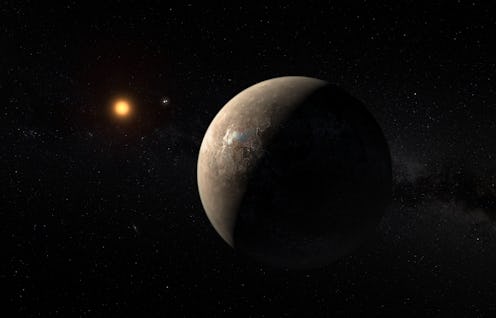News
An Object Has Entered Our Solar System & Scientists Aren't Sure What It Is

For the first time in recorded history, scientists have detected an interstellar object in our native solar system. NASA's Center for Near-Earth Object Studies (CNEOS) announced on Thursday that an object from deep space entered the solar system sometime around early September, moving at a "remarkably fast" speed in an "extreme orbit" and coming within 15 million miles of Earth. It's still in our solar system as of this writing, and CNEOS researchers sure aren't sure exactly what it is.
One thing is for sure, though: Whatever the object is, it poses no threat to Earth. Scientists believe it's currently hightailing it out of our solar system, and won't be making a return visit once it leaves.
"This is the most extreme orbit I have ever seen," Davide Farnocchia, a scientist at NASA's Center for Near-Earth Object Studies (CNEOS) at the agency's Jet Propulsion Laboratory, said in a press release. "It is going extremely fast and on such a trajectory that we can say with confidence that this object is on its way out of the solar system and not coming back."
The object, which for the time being is being called A/2017 U1, was detected on October 19th by the University of Hawaii's Pan-STARRS 1 telescope on Haleakala, Hawaii. It's less than a quarter-mile in diameter, and the postdoctoral researcher who discovered it, Rob Weryk, told NASA that "its motion could not be explained using either a normal solar system asteroid or comet orbit."
The solar system consists of the Earth, the Sun and all of the other planets orbiting the Sun, plus various moons, asteroids and other space objects. It's located within the Milky Way galaxy, which contains hundreds of billions of stars; by comparison, our solar system has only one star — the Sun. To get a sense of scale, imagine that the sun was as big of a grain of sand. By those proportions, the solar system would then be about as big as the palm of your hand, while the Milky Way would be the size of North America.
Scientists believe that A/2017 U1 zipped into Earth's solar system from somewhere else in the Milky Way galaxy. It entered the solar system from above the ecliptic, which is the spacial plane at which Earth and other planets revolve around the Sun, and was within the orbit of Mercury on September 2nd. It reached its closest point to the Sun a week later, then slingshotted around the Sun and sped away from our solar system as quickly as it had entered — that is, at a speed of around 15 miles per second.
It appears that A/2017 U1 came from the direction of Vega, a star in the Lyra constellation. Although it's unclear what the object is composed of, astronomy researcher Karen Meech at the University of Hawaii told Space Flight Insider that it may have been ejected from a planetary system during the planet formation process.
"We have been waiting for this day for decades," CNEOS Manager Paul Chodas said in NASA's press release. "It's long been theorized that such objects exist — asteroids or comets moving around between the stars and occasionally passing through our solar system — but this is the first such detection. So far, everything indicates this is likely an interstellar object, but more data would help to confirm it."
A/2017 U1 is only a temporary designation. The International Astronomical Union doesn't yet have a convention for naming interstellar objects (given that this was the first one detected in our solar system), and will have to establish one before the object currently known as A/2017 U1 receives an official title.